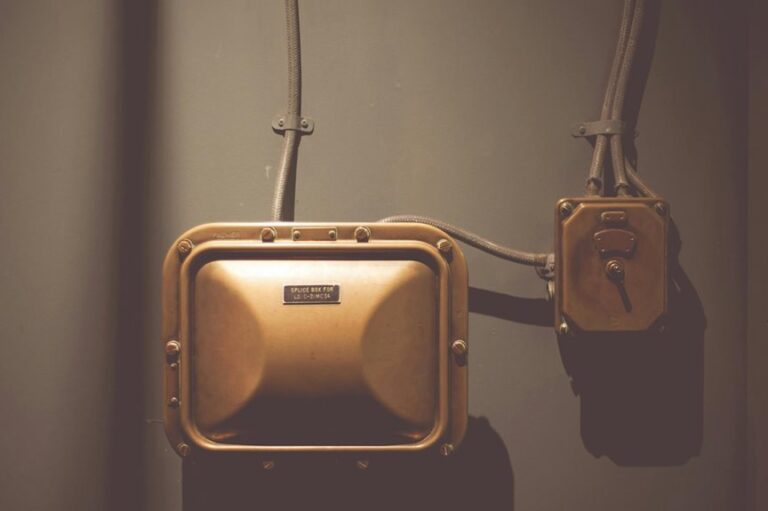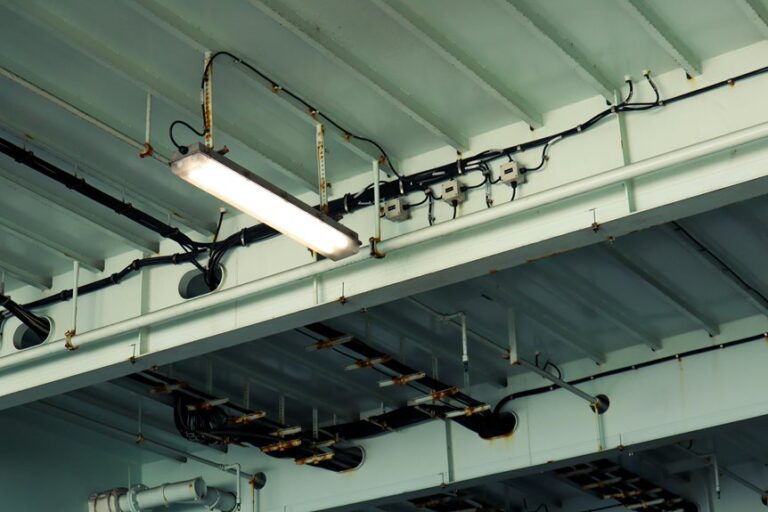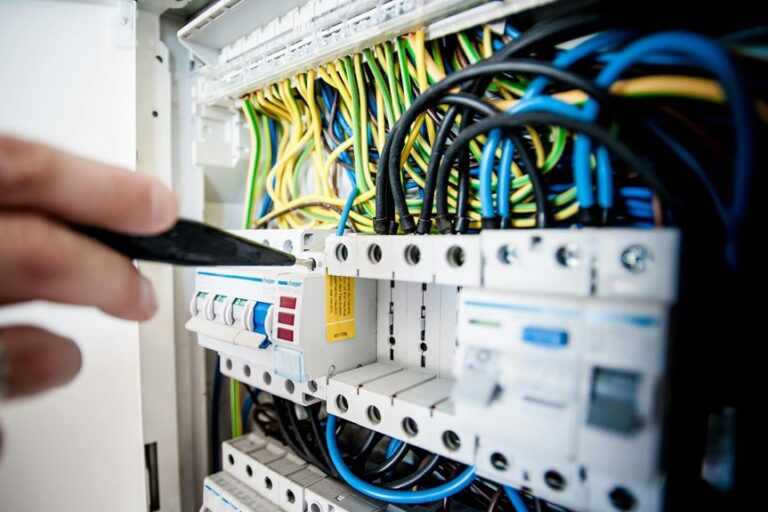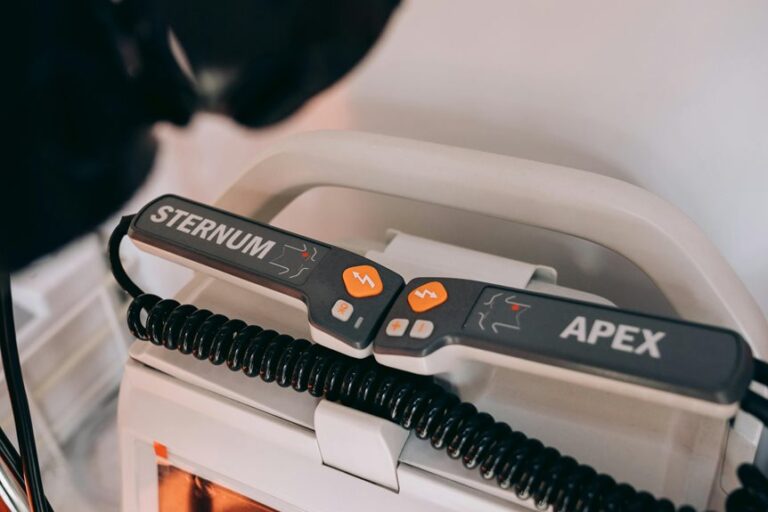When you consider the reliability of electrical systems, you can't overlook the significance of testing and calibration. These processes not only guarantee that equipment like transformers and circuit breakers operates within specified parameters but also mitigate risks associated with equipment failure. Understanding the various testing methods, from insulation resistance to thermal imaging, is essential for compliance and safety. Yet, many overlook the critical role of calibration standards in maintaining peak performance. What happens when these standards are disregarded, and how can you effectively implement best practices to safeguard your operations?
Importance of Testing and Calibration
In the domain of electrical equipment, the importance of testing and calibration can't be overstated. You need to ascertain that your equipment operates within specified parameters to guarantee safety, reliability, and efficiency.
Testing serves as the first line of defense against equipment failure, allowing you to identify potential issues before they escalate into costly repairs or hazardous situations.
Calibration, on the other hand, aligns your equipment's performance with established standards. This process verifies that your devices provide accurate measurements and outputs, maintaining compliance with regulatory requirements.
Regular calibration minimizes the risk of erroneous data, which can lead to poor decision-making and operational inefficiencies.
Types of Electrical Equipment
Electrical equipment encompasses a diverse range of devices essential for various applications across industries. Understanding the different types of electrical equipment is vital for effective testing and calibration. Here's a breakdown of some common categories:
| Type of Equipment | Description | Common Uses |
|---|---|---|
| Circuit Breakers | Devices that protect electrical circuits by interrupting the flow of current during faults. | Overcurrent protection in homes and industries. |
| Transformers | Equipment that alters voltage levels in electrical systems. | Power distribution and voltage regulation. |
| Generators | Machines converting mechanical energy into electrical energy. | Backup power supply and renewable energy sources. |
| Relays | Electromechanical switches that open or close circuits based on electrical signals. | Automation systems and control applications. |
| Meters | Instruments used to measure electrical quantities like current, voltage, or resistance. | Monitoring and diagnostics in electrical systems. |
Familiarizing yourself with these types will enhance your understanding of how to approach testing and calibration effectively. Each type plays a significant role in maintaining system reliability and safety in various applications.
Testing Methods and Techniques
When it comes to guaranteeing the reliability and safety of electrical equipment, employing appropriate testing methods and techniques is essential. You must choose methods tailored to the specific type of equipment and the environment in which it operates.
Common techniques include insulation resistance testing, where you measure the resistance of insulation to identify potential failures. This helps prevent electrical leaks that could lead to safety hazards.
Another method is functional testing, which guarantees that the equipment operates as intended under normal conditions. You'll also want to perform thermal imaging, allowing you to detect hot spots that indicate electrical issues before they escalate.
For high-voltage equipment, you might utilize dielectric withstand testing to assess insulation strength. Additionally, you can use continuity testing to guarantee that electrical paths are intact without interruptions.
Calibration Standards and Guidelines
Understanding calibration standards is essential for ensuring the accuracy and reliability of your electrical equipment.
You'll need to familiarize yourself with common calibration guidelines and how they align with industry regulations.
Compliance not only enhances performance but also mitigates risks associated with equipment failure.
Importance of Calibration Standards
Calibration standards are essential in guaranteeing the accuracy and reliability of electrical equipment testing. They provide a framework that helps you maintain the integrity of your measurement processes. Without these standards, discrepancies can arise, leading to faulty readings and potentially dangerous situations.
Here are some key reasons why calibration standards matter:
- Consistency: They guarantee that measurements are consistent across different devices and over time.
- Compliance: Adhering to established standards helps you meet industry regulations and safety requirements.
- Quality Assurance: Calibration enhances the quality of your testing processes, which is critical for product development and safety.
- Confidence: You gain confidence in your results, knowing they're based on standardized measurements.
Common Calibration Guidelines
To guarantee effective electrical equipment testing, adhering to common calibration guidelines is essential. These guidelines help you ascertain accuracy, reliability, and safety in your testing processes. First, always use calibrated reference standards that are traceable to national or international measurement standards. This traceability establishes credibility in your measurements.
Next, maintain a consistent environment during testing. Factors like temperature and humidity can notably affect calibration outcomes. Regularly scheduled calibrations should also be a part of your protocol, typically determined by the manufacturer's recommendations or your specific usage conditions.
Here's a concise overview of key calibration practices:
| Calibration Practice | Description |
|---|---|
| Reference Standards | Use standards traceable to national/international bodies. |
| Environmental Control | Monitor temperature and humidity during testing. |
| Scheduled Calibration | Calibrate based on manufacturer's guidelines. |
| Documentation | Keep detailed records of all calibration activities. |
Compliance With Industry Regulations
Adhering to common calibration guidelines not only guarantees accuracy in testing but also aligns your practices with industry regulations. Compliance is essential for maintaining safety, reliability, and performance of electrical equipment.
By following established standards, you verify that your calibration processes meet the required benchmarks set by regulatory bodies.
To navigate the complexities of compliance, consider the following key points:
- Familiarize yourself with relevant standards: Understand the specific calibration standards applicable to your industry, such as ISO 9001 or IEC 17025.
- Document your procedures: Maintain detailed records of calibration activities, including equipment used, the calibration process, and results.
- Regularly review guidelines: Stay updated on any changes in regulations or standards that may affect your calibration practices.
- Implement training programs: Confirm that personnel involved in calibration are well-trained in both the technical aspects and regulatory requirements.
Benefits of Regular Testing
Regular testing of electrical equipment offers numerous advantages that directly impact safety, efficiency, and longevity. By conducting routine assessments, you can identify potential hazards before they escalate into serious issues. This proactive approach minimizes the risk of electrical failures, thereby protecting personnel and assets.
Additionally, regular testing guarantees that your equipment operates at ideal levels, which can considerably enhance energy efficiency. You'll likely notice reduced energy costs as a result of improved performance and minimized downtime due to unexpected failures.
Moreover, maintaining a consistent testing schedule extends the life of your electrical systems. By identifying wear and tear early, you can implement timely repairs or replacements, which ultimately saves you money in the long run.
Lastly, regular testing supports compliance with industry standards and regulations. This not only keeps your organization legally protected but also boosts your reputation as a safety-conscious entity.
Common Calibration Tools
When calibrating electrical equipment, you'll often rely on fundamental tools like multimeters and oscilloscopes.
These devices not only measure voltage, current, and resistance but also help guarantee signal integrity during testing.
Additionally, understanding the importance of calibration certificates is vital for maintaining compliance and verifying accuracy in your measurements.
Multimeters and Their Uses
Multimeters serve as essential tools in electrical equipment testing, allowing you to measure voltage, current, and resistance with remarkable accuracy. These versatile devices come in both analog and digital forms, each with unique advantages.
When you use a multimeter, you're able to perform various important functions that are necessary for diagnosing electrical issues.
Here are some key uses of multimeters:
- Measuring DC and AC voltage: Fundamental for evaluating power supplies and circuit integrity.
- Checking current flow: Helps confirm that circuits are operating within specified parameters.
- Testing resistance: Important for ensuring components are functioning correctly and avoiding short circuits.
- Continuity testing: Quickly identifies breaks in wiring and connections.
Incorporating a multimeter into your testing routine enhances precision and efficiency.
Regular calibration of these instruments is essential to maintain accuracy, ensuring you receive reliable measurements.
Oscilloscopes in Calibration
Oscilloscopes are frequently employed in calibration processes, providing invaluable insights into signal behavior and system performance. When you use an oscilloscope, you're able to visualize waveforms, measure voltage levels, and analyze frequency characteristics. This capability is critical when you're verifying the accuracy of electronic devices and guaranteeing they meet specified performance standards.
In calibration, you'll typically connect the oscilloscope to the device under test (DUT). By observing the output signal, you can determine if the DUT is functioning as expected. Pay attention to parameters such as rise time, overshoot, and settling time, as these metrics can indicate potential issues.
Moreover, oscilloscopes allow for real-time analysis, which is essential when troubleshooting signal integrity problems. You can employ trigger functions to isolate specific events, making it easier to pinpoint anomalies. Additionally, advanced oscilloscopes offer features like serial decoding, which can be beneficial when working with digital signals.
Ultimately, oscilloscopes serve as a cornerstone tool in calibration, enabling you to make informed decisions about device performance and reliability. Their ability to capture and display intricate signal details guarantees you maintain the highest standards in electrical testing.
Calibration Certificates Importance
In the domain of electrical testing, calibration certificates play an essential role in guaranteeing that your instruments and devices operate within specified tolerances.
These certificates provide documented evidence that your equipment has been tested and calibrated according to established standards. This not only helps maintain quality but also guarantees compliance with various regulations.
Here are some key reasons why calibration certificates are crucial:
- Traceability: They confirm that your devices are traceable to national or international standards.
- Confidence: They provide assurance that your measurements are accurate and reliable.
- Regulatory Compliance: Many industries require regular calibration certificates for compliance with legal and safety standards.
- Quality Control: They help in maintaining consistency in your processes and products, supporting overall quality management.
Without these certificates, you risk inaccurate measurements that could lead to faulty products or unsafe conditions.
Fundamentally, calibration certificates serve as a critical safeguard, ensuring that your electrical equipment meets performance expectations and adheres to industry standards.
Prioritizing their acquisition and maintenance can remarkably enhance your operational integrity.
Industry-Specific Applications
Electrical equipment testing plays a pivotal role in various industries, guaranteeing safety and efficiency across systems. You'll find that each sector has unique requirements, making tailored testing essential. Here's a breakdown of some industry-specific applications:
| Industry | Testing Focus |
|---|---|
| Manufacturing | Equipment calibration for precision |
| Healthcare | Electrical safety and compliance |
| Telecommunications | Signal integrity and performance |
| Energy | Load testing and reliability |
In manufacturing, testing focuses on guaranteeing machinery operates within specified tolerances to maintain productivity. In healthcare, you prioritize safety compliance to protect patient welfare and adhere to regulations. For telecommunications, your emphasis lies on verifying signal integrity to guarantee seamless communication. In the energy sector, load testing is critical to ascertain that systems can handle expected demand without failure.
Safety Considerations
Testing practices outlined in the previous section not only secure operational efficiency but also prioritize safety, a fundamental aspect of electrical equipment management.
You must recognize that even minor oversights can lead to severe consequences. Consequently, adhering to safety protocols during testing and calibration is non-negotiable.
To enhance your safety measures, consider the following key points:
- Always use personal protective equipment (PPE) to shield yourself from electric shock and other hazards.
- Ascertain that all equipment is properly de-energized and locked out before beginning any testing procedures.
- Regularly inspect your testing tools and equipment for wear and damage, replacing any that are compromised.
- Stay informed about the latest safety regulations and standards relevant to your industry.
Best Practices for Maintenance
Effective maintenance practices are essential for guaranteeing the longevity and reliability of electrical equipment. To achieve this, you should establish a routine inspection schedule that includes both visual and functional checks. Regularly inspect connections, insulation, and components for signs of wear or damage.
Don't overlook the importance of cleaning; dust and debris can impede performance and lead to overheating.
You'll also want to maintain accurate records of all maintenance activities. Documenting repairs, replacements, and inspections not only helps with compliance but also aids in identifying patterns that may indicate deeper issues.
Additionally, use calibrated tools for testing to guarantee you're getting accurate readings during maintenance checks.
Implementing a predictive maintenance strategy can further enhance reliability. By utilizing condition-monitoring technologies, you can anticipate failures before they occur, minimizing downtime.
Always adhere to the manufacturer's guidelines for maintenance intervals and procedures, as they're tailored to the specific equipment.
Lastly, guarantee that all personnel involved in maintenance are properly trained and understand the equipment's operational parameters. Investing in your team's knowledge will pay dividends in maintaining equipment efficiency and safety.
Follow these best practices, and you'll enhance both the lifespan and reliability of your electrical systems.
Conclusion
In summary, regular electrical equipment testing and calibration is essential for maintaining safety and reliability. Did you know that up to 30% of electrical failures can be traced back to inadequate testing? By prioritizing these practices, you not only guarantee compliance with industry standards but also enhance operational efficiency. Implementing best practices in maintenance and utilizing the right tools can greatly reduce risks, extend equipment lifespan, and ultimately lead to improved performance in your electrical systems.








